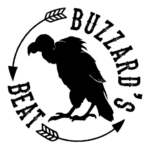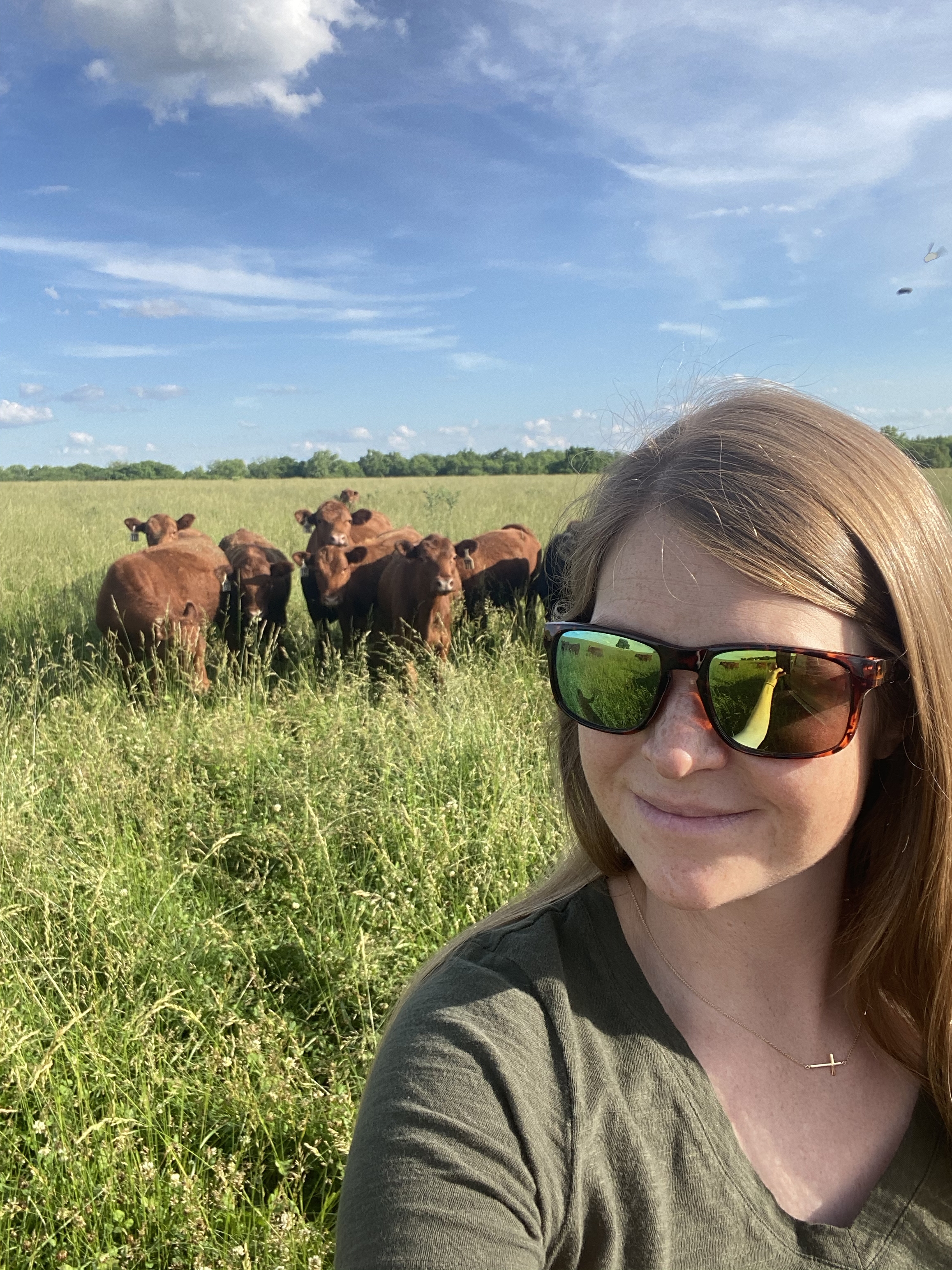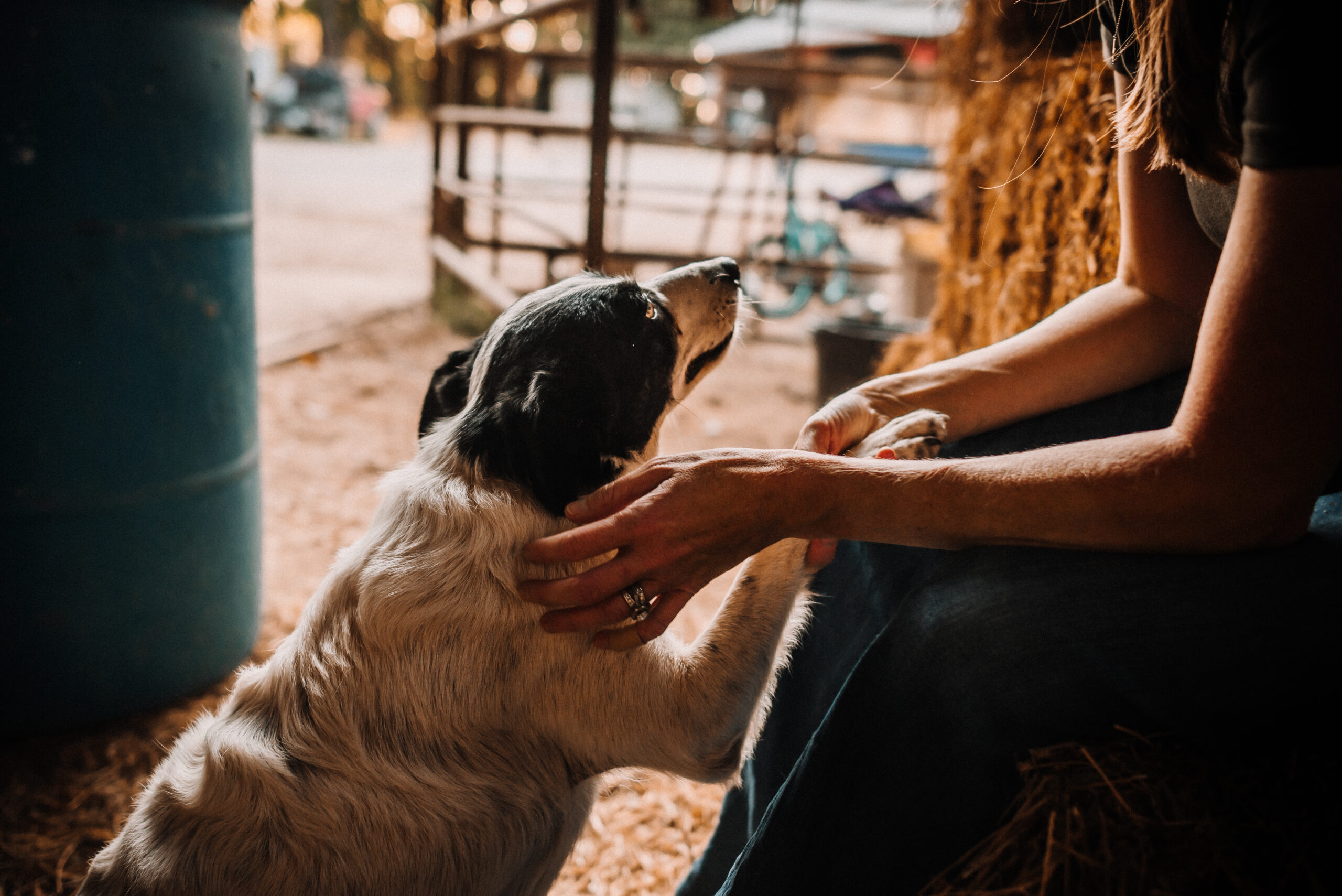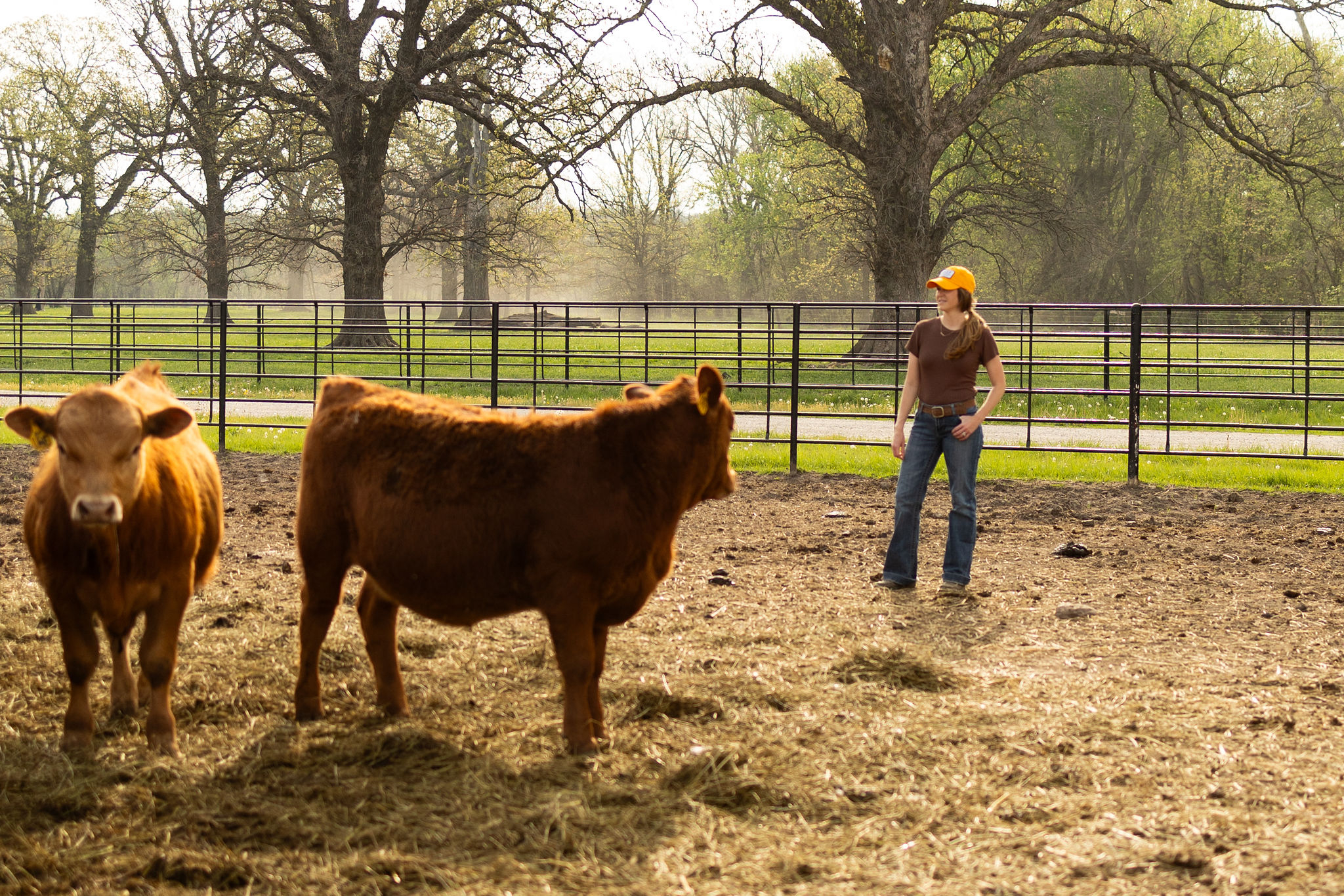This post is a collaboration with Beef. It’s What’s For Dinner. on behalf of the Beef Checkoff. I received compensation but all thoughts and opinions are my own.
When I was a kid, my cousins and I would pretend to be farmers and put a piece of tall grass or wheat in our mouth – we likened it to the “good ole days” of farming with plows and overalls. While none of us ended up farming with a plow or in overalls, that memory of grass in our teeth remains vivid in my memory, as does the taste of grass. Take it from me, tall fescue is not overly appealing to the palate.
While plant matter in its raw form is not high on my list of favorite foods, our ranch is home to both oodles of cows and acres upon acres of grass-filled pastures which coexist in perfect harmony. Our cattle and pastures are part of the biogenic carbon cycle in which methane in the atmosphere in converted into carbon dioxide that plants utilize to perform photosynthesis and fix the carbon into cellulose (aka plant matter). At that point, our cattle eat the plants and the cycle beings once again.
The land our ranch and pastures occupy is very hilly and has a lot of rocks and ravines – it would be virtually impossible to use that land for human food products such as tomatoes or wheat. However, our cattle do a great job of upcycling inedible grass into a high-quality protein – BEEF! In fact, 90% of what cattle eat is plants and plant by-products that humans can’t eat and would otherwise go to waste. According to research from Oklahoma State University, pastures and grasslands make up nearly 30% of U.S. land mass, and voiding the conversion of this land into tillable crop acreage can help prevent further greenhouse gas emissions. In fact, enhancing carbon sequestration through properly managed cattle grazing practices can reduce the already minimal carbon footprint of beef dramatically.[1]
Not only do cattle turn grasses into nutritious beef, but they are also blessed with a unique digestive system that allows them to upcycle inedible by-products into protein, as well. Cattle and cattle producers are sustainable partners in the global partner share year round – not only in the summer when the grass is green and lush. In the winter, our cattle consume dried distillers grains for added protein, in addition to hay. Dried distillers grains are a by-product of ethanol production and are inedible by humans but by feeding them to cattle, we cut down on waste. In other areas of the country, cattle eat other by-products such as spent grapes from wine production, citrus pulp from juicing and sugar beet pulp from sugar production. All of these by-products would sit in a landfill and contribute to greenhouse gases if cattle weren’t able to consume and convert them into nutritious, high-quality beef thereby decreasing the overall climate impact of food production in the U.S.
As a rancher, I’m proud to raise cattle that yield a nutritious, high-quality protein while also helping reduce the overall climate impact of our food supply. I’m not aware of many other animals that can work magic the way cattle do with plant protein but I count my blessings every day that I’m able to live and work in a beautiful place, doing what I love.
[1] http://www.dasnr.okstate.edu/Members/donald-stotts-40okstate.edu/carbon-sequestration-a-positive-aspect-of-beef-cattle-grazing-grasslands



